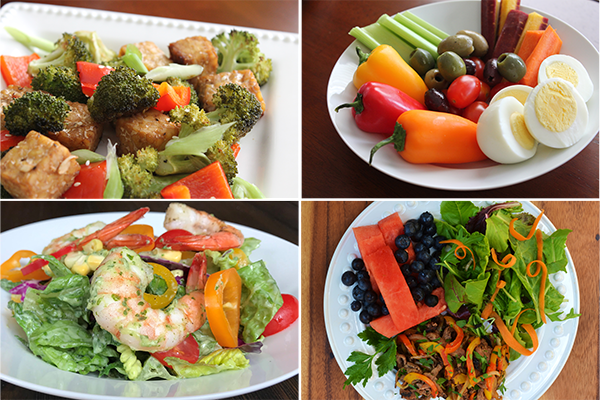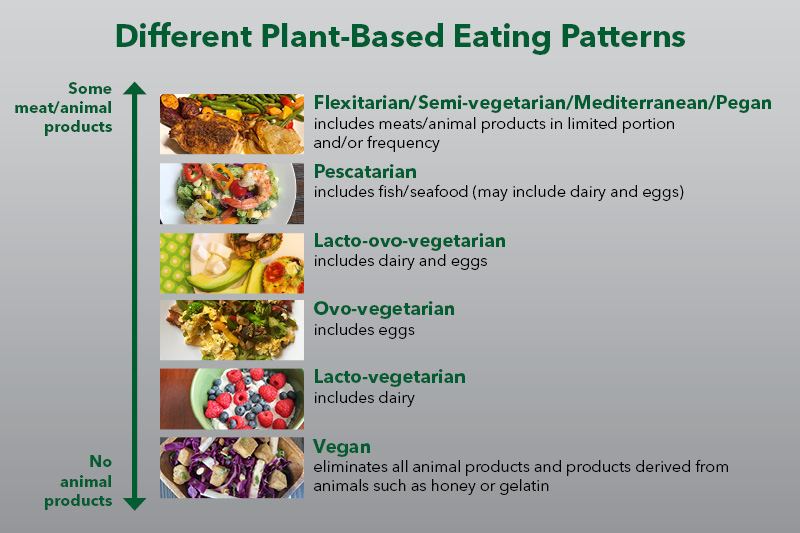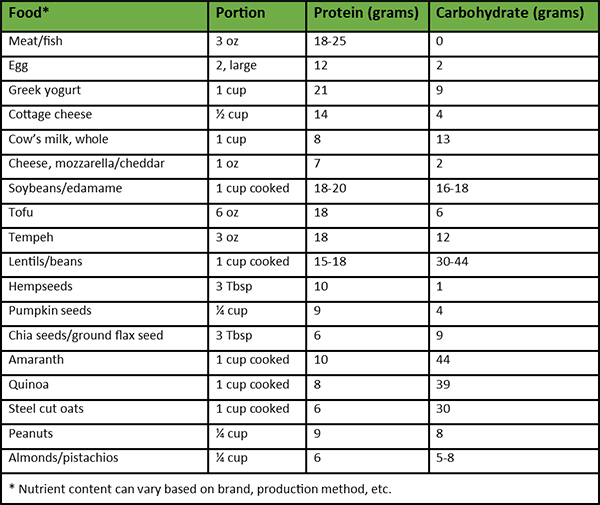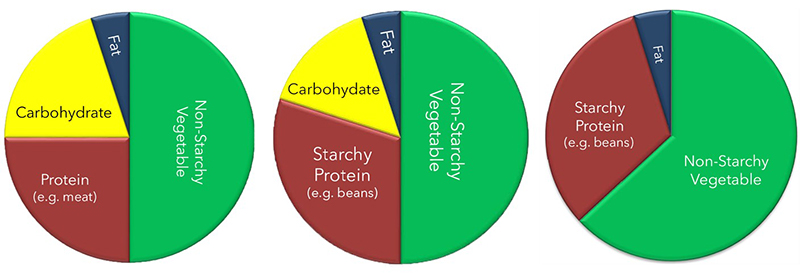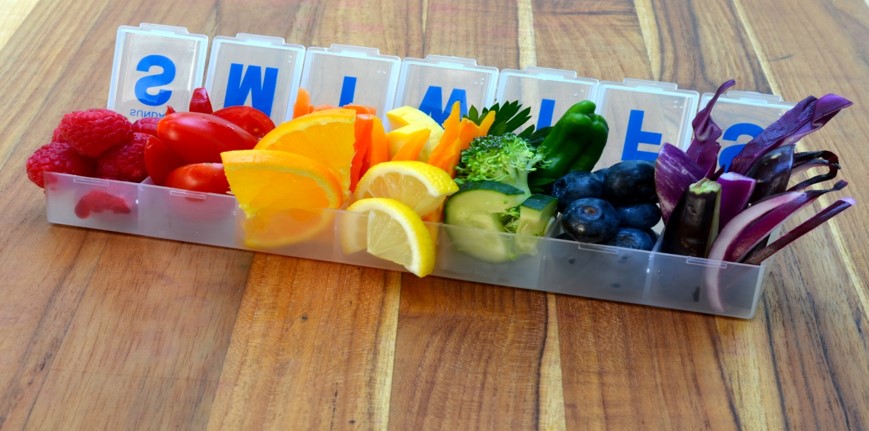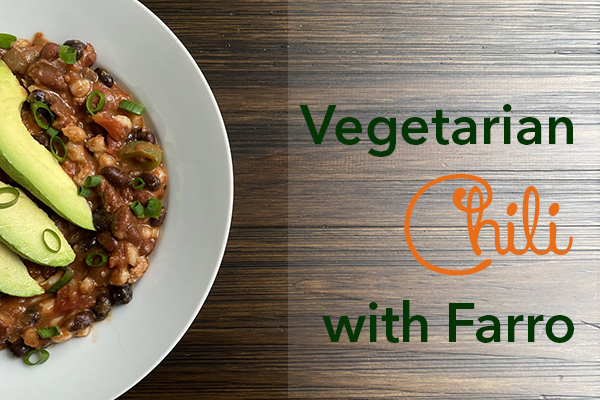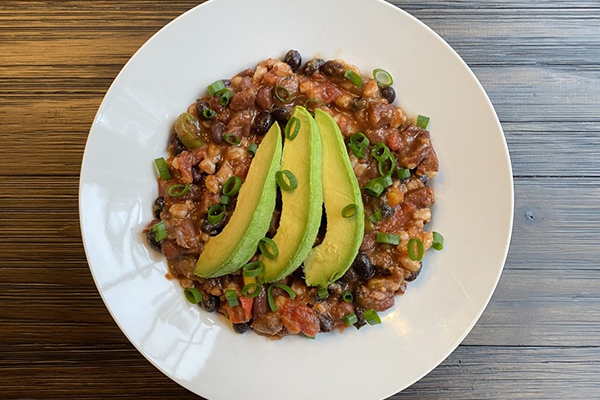Whether you decide to limit or avoid meat, eggs and/or dairy for health, ethical, religious or environmental reasons, there are a few things you should know to ensure you’re getting the right balance of nutrients to optimize your health and energy now and for years to come.
Health Benefits of Plant-Based Eating Patterns
Well balanced, plant-based eating patterns can lower the risk of heart disease, high blood pressure, type 2 diabetes and cancer, and eating this way can help you to live a healthier, longer life. People who live in the world’s blue zones, where they are known to live exceptionally long lives, eat mostly…you guessed it…plants (95% or more of their diet is plants). Packing your plate with plants translates to lots of fiber, magnesium, potassium, vitamin C, vitamin E, folate, carotenoids, polyphenols and other phytochemicals that prime your body to prevent and repair oxidative damage, keep inflammation under control and maintain a healthy microbiome.
To get the health benefits of plant-based diets, your menu should consist mostly of whole or minimally-processed foods. It’s important to avoid falling into the trap of consuming lots of white pasta, bread and “fake” meats loaded with fillers. A plant-based diet that is high in refined/ultra-processed carbohydrates is detrimental to overall health, so if you’re considering going plant-based, your foundation should be built on vegetables, legumes, whole grains, nuts, seeds and fruit.
Personalize your plant-based plate #SASLife Click To TweetInterpretations of “Plant-Based”
There are several different ways to incorporate a plant-based eating pattern which is good news because it allows each person to find what works best for them. A plant-based diet simply means that the majority of the food eaten comes from vegetables, legumes/beans, nuts, seeds, whole grains and fruit. Some meats, eggs and dairy are included in some variations. Below is a snapshot of terminology that describes different plant-based eating patterns.
Balancing Your Plate for Energy and Satiety
Building your meals with nonstarchy vegetables and quality sources of protein, carbohydrates and fat is key to feeling satisfied and sustaining your energy levels throughout the day. Click here for a refresher on types of food in each category.
Aiming for 20 - 30 grams of protein per meal can be a good place to start. It can take some planning to balance meat-free meals that meet protein needs and keep carbohydrates in check. This is especially important for those with underlying conditions that are exacerbated by high carbohydrate intake (e.g., prediabetes or diabetes, high triglycerides, high LDL cholesterol, non-alcoholic fatty liver disease). Since meats naturally contain almost no carbohydrates, and lean meat is the most protein-dense, whole food out there, including even a small portion (3-4 oz.) of grass-fed meat, game meat or wild-caught, sustainable fish can be a healthy choice to decrease the risk of overdoing the carbohydrates. Check out the sources of protein and their ballpark carbohydrate content below.
If your main source of protein is high in carbohydrates, reduce your portion of other high carbohydrate foods (e.g., rice/grains, potatoes, bread products, fruit) by half or skip that side altogether and serve yourself more nonstarchy vegetables instead. Don’t forget to include a source of healthy fat to round out your meal. Olives, avocados, olive or avocado oil, nuts, seeds, nut and seed butters and fatty fish (e.g., salmon, sardines) are all good sources. If you don’t eat fish, ground flax seeds, walnuts, chia seeds and organic, whole soy foods will provide you with alpha linolenic acid (an omega-3 fatty acid), but that may not be enough. You might also benefit from a supplement with the EPA and DHA omega-3 fatty acids to support brain, eye, and cardiovascular health and moderate inflammation in the body.
Check out Plant Powered Protein for more details on protein needs and considerations if you are eating a vegetarian or vegan diet, and The Truth about Fat for an overview on the different types of dietary fats.
Other Nutrients to Notice When Limiting Meat and Dairy
Vegetarians and vegans can be prone to deficiencies in vitamin B12, calcium, iron, zinc, and fat-soluble vitamins like D and K. That’s because these vitamins and minerals are more abundant, more absorbable and/or in a more usable form in animal products. For example, vitamin B12 is only naturally found in reliable amounts in animal products, and though certain plants contain significant amounts of zinc, other chemicals found in the plants (phytates) can interfere with its absorption into our bodies.
Some people seem to do well for years on vegan and vegetarian diets, while others develop problems quickly. How well meal plans are balanced, food preparation methods, use of supplements, the amount of nutrient reserves the body has, health status and genetic variations all affect how long someone might be able to follow a strict vegetarian or vegan diet before they could develop nutrient deficiencies. Read on to learn more about the plant sources of these noteworthy nutrients.
VITAMINS
- Vitamin B12 - Plant sources include fortified foods such as nutritional yeast and some nondairy milks. Since certain foods fortified with vitamin B12 are more highly processed and may use a form of the vitamin that not everyone can use efficiently (cyanocobalamin), supplementing with a different form of vitamin B12 (such as methylcobalamin, adenosylcobalamin or hydroxocobalamin) found in some high-quality multivitamins is advisable for many people who do not consume animal products.
- Vitamin D - Plant sources include mushrooms and fortified foods such as nondairy milk. Food sources and sunshine, another vitamin D source, are often not enough to meet everyone’s needs. A blood test can help you determine if and how much extra vitamin D you need. Do not supplement with doses over 2000 IUs without a blood test and speaking with your Registered Dietitian Nutritionist or other Health Care Provider.
- Vitamin K2 - Plant sources included natto (fermented soybeans), and there is also some vitamin K2 in probiotic sauerkraut. Some high quality multivitamins also contain vitamin K2.
MINERALS
- Iron - Plant sources include soybeans, tofu, lentils, beans, leafy green vegetables like spinach, seeds, amaranth, quinoa and dried fruits. Pair these with a food high in vitamin C (e.g., citrus, bell pepper, strawberries) and garlic, onions, turmeric, ginger or pepper for increased absorption. To maximize iron absorption, avoid green or black tea and coffee for an hour before and after meals. Cooking with cast-iron also increases iron content of foods significantly, especially when cooking with acidic foods. Note: Dairy and cheese are NOT good sources of iron. Not everyone who limits meat needs extra iron. Blood tests can determine your iron needs.
- Zinc - Plant sources include cashews, peanuts, soybeans, tempeh, tofu, oats, quinoa, brown rice, chickpeas, sesame seeds and pumpkin seeds. Soaking, sprouting and fermenting these foods can increase absorption by reducing the phytates in the food.
- Calcium - Plant sources include Bok choy, collard greens, mustard greens, arugula, wakame, amaranth, teff, broccoli, legumes, almonds, tahini/sesame seeds and beans. Tofu made with calcium is another good option. Some nondairy milks, cereals and even some orange juices are fortified with calcium, but there is a tradeoff when consuming processed foods that are high in refined carbohydrates and sugar.
When to Consider Supplementation
- Getting your nutrients from a wide variety of foods first is best. This vegetarian nutrition guide and an app such as Cronometer can help you gauge whether you are meeting vitamin and mineral targets. (View and adjust nutrient targets in the settings.) If you are looking for help filling in the gaps in your diet and are considering a supplement, talk to your Registered Dietitian Nutritionist or other Health Care Provider about whether the options below are appropriate for you and when to take them.
- A high quality multivitamin may help you cover your bases, such as Thorne Basic Nutrients 2/day, Pure Encapsulations PureGenomics, or Thorne VeganPro Complex which is also a protein powder.
- If you are not a fish eater, an omega-3 fatty acid such as ProOmega 2000 or Nordic Naturals Algae Omega, a vegan option, may be worth considering.
- For those whose blood test reveals they need additional vitamin D (in addition to what is included in a multivitamin), Nordic Naturals Plant-Based Vitamin D3 is a vegan option.
- For those whose blood test reveals they have low iron stores or iron-deficiency anemia, Thorne Iron Biglycinate is one option that tends to be gentler on the digestive system than some other forms.
- If you think you may need a calcium supplement, one that contains 500 mg or less and contains other bone-supporting nutrients such as Thorne Basic Bone Nutrients may be worth looking into.
Remember, too much vitamin D, iron and zinc can be risky in certain circumstances, and supplements/combinations of supplements should be tailored to meet your specific needs.
KEY TAKEAWAYS
- There are several variations of plant-based eating patterns which can promote health.
- Genetic variations and health status may impact the type of diet that is best for your health.
- High carbohydrate and lower protein intake may be problematic for some people who are severely limiting/excluding meat, dairy and/or eggs.
- Supplements should be considered for those who are unable to meet minimum intake recommendations of certain nutrients or for those who have underlying conditions that affect nutrient absorption and utilization.
Vegetarian Chili with Farro
Serves 6-8
Prep Time: 15-20 minutes
Cook Time: 40 minutes - 8 hours (depending on method)
PRINT RECIPE
Ingredients
3 garlic cloves, minced
1 yellow onion, diced
1 green bell pepper, diced
1 red or yellow bell pepper, diced
8 oz package button mushrooms, chopped
3 cups tomatoes, diced, fresh or a 28 oz can
1 cup farro, rinsed and drained
3 cups vegetable broth
1 ½ cups cooked black beans or a 15 oz can, drained and rinsed
1 ½ cups cooked red kidney beans or a 15 oz can, drained and rinsed
½ cup tomato paste
2 tsp cumin
2 Tbsp chili powder
6-8 drops hot sauce
¼ tsp cayenne, or to taste
¼ tsp salt, or to taste
extra vegetable broth as needed
garnishes: sliced avocado, chopped green onion
Instructions
Slow Cooker Method
- Add all ingredients (except garnishes) to slow cooker, stir and heat on low for 6-8 hours.
- Add extra vegetable broth as needed to thin to desired consistency.
- Serve with sliced avocado and chopped green onion.
Instant Pot Method
- Add all ingredients (except garnishes) to Instant Pot.
- Attach lid and turn to lock, set the valve to SEALING, and manually set to HIGH pressure for 15 minutes.
- Let pressure naturally release for at least 10 minutes, then manually release any remaining pressure until float valve drops.
- Serve with sliced avocado and chopped green onion.
